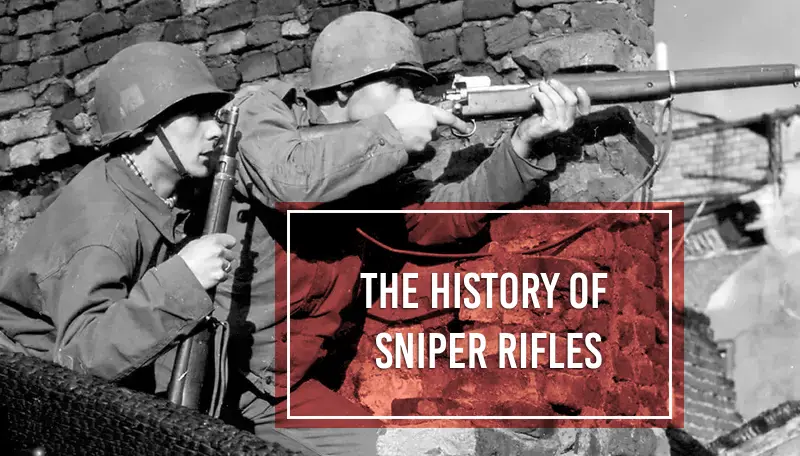
Last Updated on
It’s easy to forget that, from a historical perspective, firearms haven’t been with us for that long. In the same way, sniper rifles took their time to assume their current form. But everything has its roots somewhere, and sniper rifles are not an exception. Marksmen from a century or two ago didn’t have the equipment that allowed them to shoot from great distances and had to rely solely on their skills. What did they have to work with? When did the sniper rifle come to look the way we know it today? Read on to find out.
Table of Contents
The Birth of the Sniper Rifle
Sniper Rifles in World Wars
World War I
World War II
Post-War Developments
Sniper Rifles in Modern Warfare
The Future of Sniper Rifles
Conclusion
FAQs

The Birth of the Sniper Rifle
Tracking the lineage of the sniper rifle is not an easy task. Many generations of firearms passed on their features to descendants before a true sniper rifle came into being. It’s safe to assume that the ancestors of sniper rifles were used by soldiers of the “Jäger” units. Those were light infantry units in the German states. Only skilled hunters who proved their marksmanship could join. As such, members of those units became known for their ability to use rifles with precision over long distances. The renowned American long rifle, also known as Kentucky rifle, was designed based on the early Jäger rifles.
The Whitworth rifle, a British innovation from the mid-18th century, is often recognized as one of the first true sniper rifles. It was used by Confederate soldiers during the American Civil War, providing an early demonstration of the significant impact that a skilled marksman with a precision rifle could have on the battlefield. The barrels of those rifles featured innovative hexagonal polygonal rifling. This novelty changed the way the projectiles and rifling interacted, greatly boosting the precision of shots and the distance from which they could be made. With that rifle, it was possible to land a shot standing almost a mile away. The Confederacy prized the expensive and difficult-to-acquire Whitworth rifles and issued them to only a chosen few.
The term “sniper” itself has an interesting origin story. It’s thought to have derived from the term “snipe shooting”. The snipe was a small, fast-flying game bird that was notoriously difficult to hit. Those who could successfully shoot them were known as “snipers”, a term that eventually migrated to the military domain to describe sharpshooters.
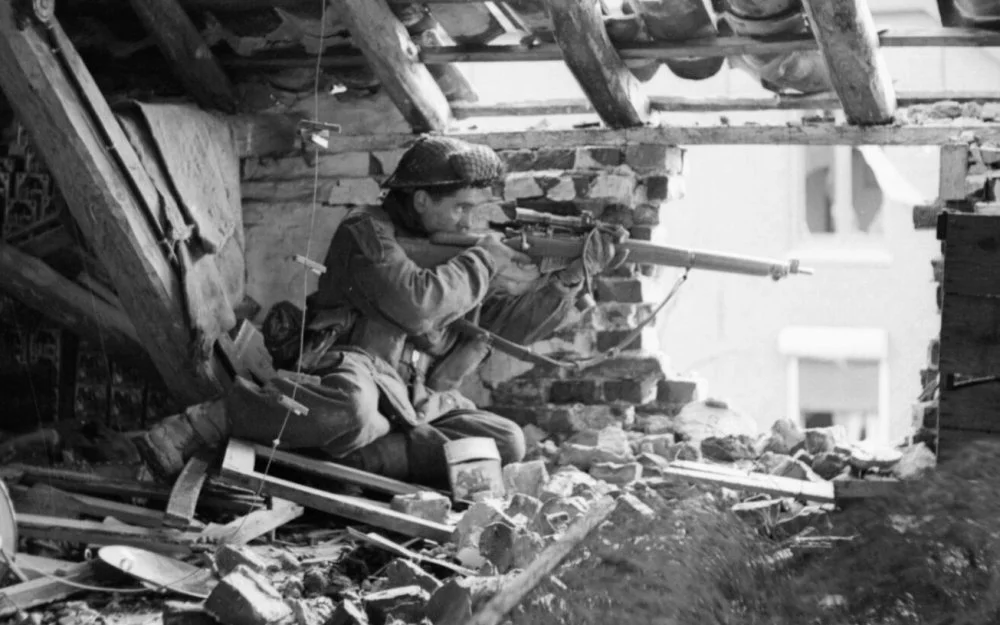
Sniper Rifles in World Wars
World War I
During World War I, the concept of sniping and the use of sniper rifles became more recognized and widely implemented by all major powers. Snipers began receiving dedicated training and were no longer simply chosen from the ranks of sharpshooters. However, the training was quite rigorous, and only a few trainees were capable of finishing the full course. Despite that, the fact that sniper units were now a necessity slowly began to settle, their effectiveness hard to deny.
One of the most notable rifles from this period was the Enfield Pattern 1914 rifle. This German design was adopted by the British and built by Americans. The Enfield was known for its robustness and accuracy, making it an ideal choice for snipers. It dominated the other sniper rifles developed during the Great War.
The M1903 with a Winchester A5 was another significant model that was the standard USMC sniper rifle of World War I. This rifle’s reliability and accuracy were well acknowledged, and it was used extensively throughout the war.
In Germany, the Army ordered 15,000 sniper rifles in the spring of 1915, built using Gewehr 98 service rifles that were carefully selected for their accuracy. The 7.92x57mm Gewehr 98 featured a long 29.1-inch barrel, which allowed for even more precise shots at longer distances.
Regarding riflescopes, they were a relatively new addition to rifles during World War I. While they did offer increased accuracy, they were often cumbersome and delicate. The technology and understanding of how to effectively use scopes were still in a developmental stage. As a result, the scopes of this era lacked the durability and ease of use found in later models. However, to this day, the scope remains one of the most significant distinguishing features of a sniper rifle.
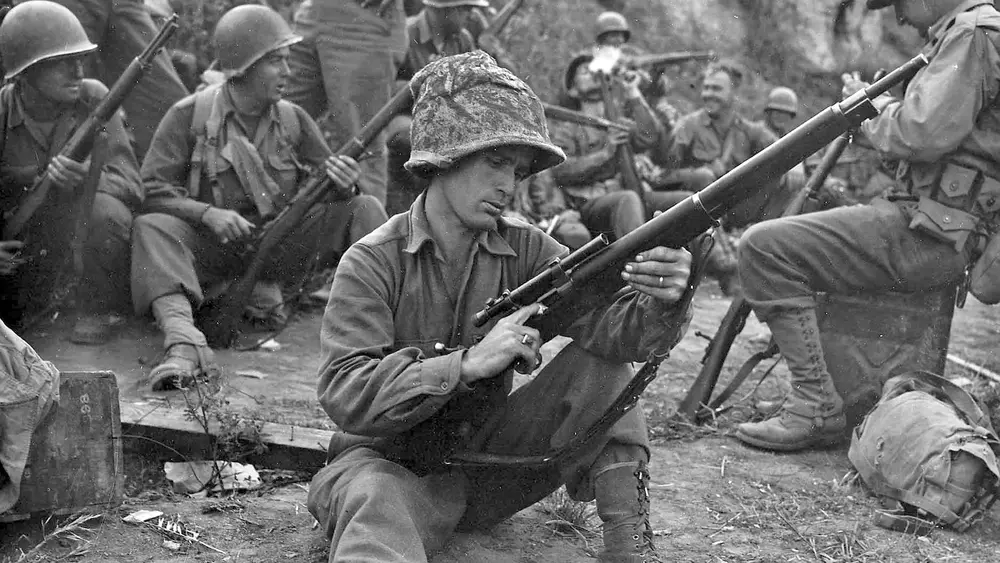
World War II
During World War II, the role of the sniper and the technology of sniper rifles continued to develop. The Springfield M1903, which had been used in World War I, was still in service, but new models also emerged.
One of the most famous sniper rifles of the WWII period was the Mauser Karabiner 98 Kurz, a bolt-action rifle that was the primary German service rifle. The Kar98k, as it was commonly known, was a sturdy, reliable weapon, fitted with a scope, that offered good accuracy and was often for use by snipers.
The Soviet Union also produced one of the most renowned sniper rifles of the period, the Mosin-Nagant M1891/30. While the rifle itself was a relatively straightforward bolt-action design, it earned a reputation for ruggedness and reliability, and with a PU scope attached, it became an effective sniper weapon.
The M1903A4 was the U.S. Army’s sniper rifle of choice during the Second World War. This model was a variant of the older M1903, but it was specifically designed to be used with a scope. The 03A4 used the Weaver Model 330 or 330C 2.5x riflescope, which was designated the M73B1 when used by the military.
As far as scopes were concerned, they had improved significantly since World War I. With advancements in optics technology, the scope now could withstand the rigors of lengthy field deployment. The Unertl scope, though wasn’t the only one in use, offered an outstanding magnification of 10x while.
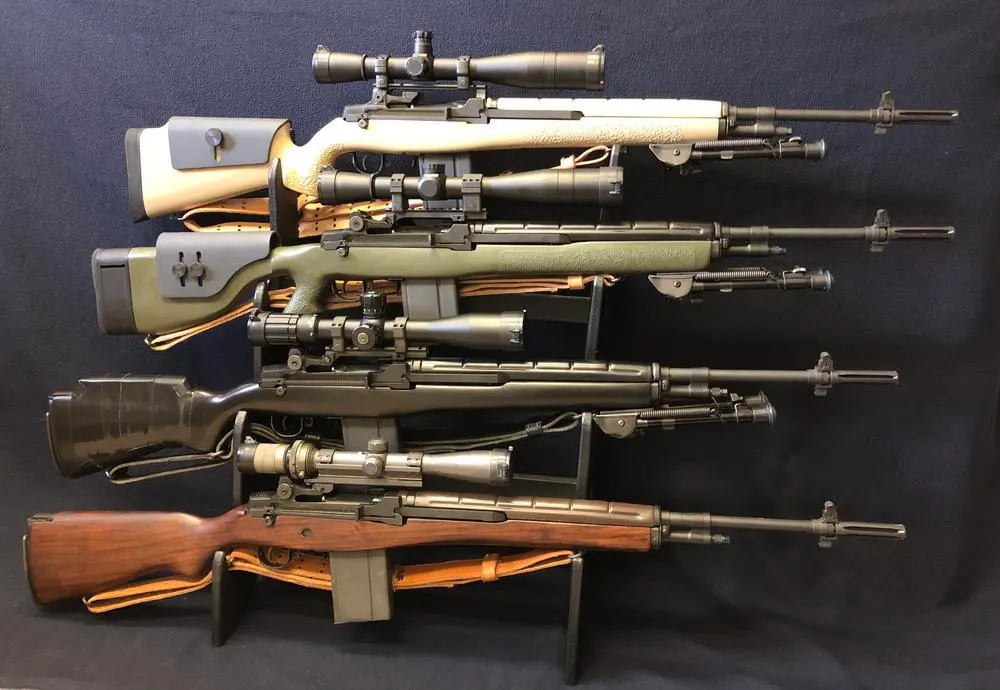
Post-War Developments
The two World Wars gave sniping a huge boost, and its development didn’t stop after their end. During the Cold War, sniper rifles saw a shift from manual bolt-action systems to semi-automatic systems. One of the most iconic rifles from this period was the Dragunov Sniper Rifle (SVD), developed in the Soviet Union around 1963. This semi-automatic sniper/designated marksman rifle was chambered for the 7.62x54mm round and offered an improved rate of fire and decent accuracy for its role.
In the United States, the M21 Sniper Weapon System, a version of the M14, was introduced during the Vietnam War. It was a semi-automatic sniper rifle that used 7.62×51mm NATO ammunition and was fitted with an adjustable ranging telescope.
The period also saw significant improvements in ammunition technology. The .338 Lapua Magnum cartridge, for instance, was developed in the 1980s specifically for long-range snipers and is still widely used today.
Optics also improved greatly during this time. The use of advanced glass and better construction methods allowed for the creation of more durable, reliable, and precise scopes. Night vision optics were also introduced during this time, making it possible for snipers to operate effectively in low-light conditions.
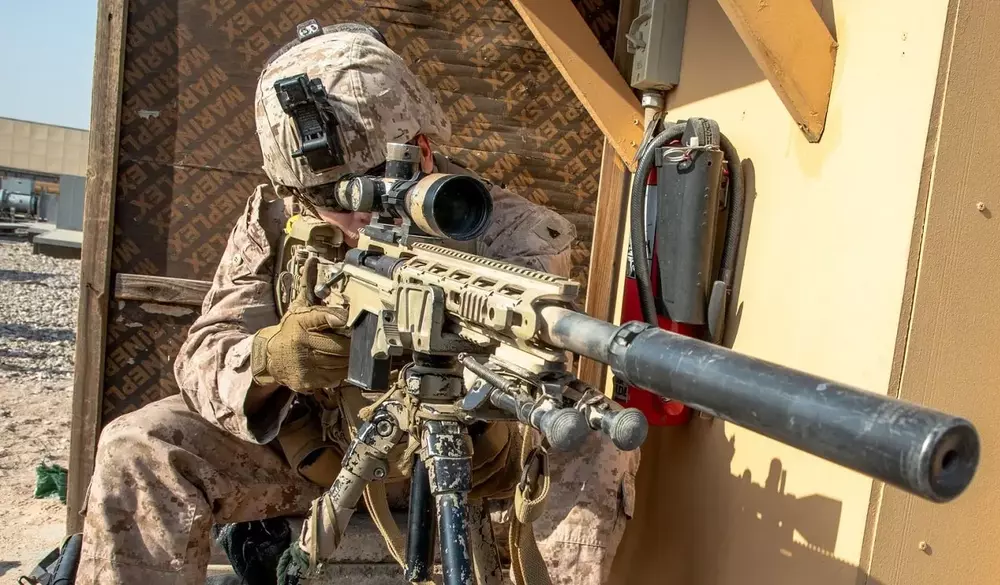
Sniper Rifles in Modern Warfare
The technologies have experienced an unprecedented boost within the last century, and firearms also benefited greatly from this. The focus with sniper rifles was always on improving their three aspects: precision, power, and range. Today, these weapons are more versatile, reliable and accurate than ever before.
Among the top sniper rifles today, the AI AXSR stands out. Designed by Accuracy International, it is renowned for its engineering that offers unparalleled accuracy and reliability. The Barrett M82, a manual bolt-action anti-material and sniper rifle, is another top-tier firearm.
The US military uses several high-quality sniper rifles, including the M24 and M40, as well as the M2010 Enhanced Sniper Rifle. These rifles are based on the Remington 700 design, which is also widely used in law enforcement.
Modern sniper rifles boast maximum effective ranges that were unimaginable just decades ago. For example, the McMillan Tac-50 has a maximum effective range of over 6,500 feet.
In terms of distinguishing aspects, modern sniper rifles have seen significant advancements in various components:
Scopes: Modern scopes offer greater magnification, clarity, and durability. They often include features like illuminated reticles and bullet drop compensators. Some even offer smart features, like digital displays and range finders.
Action: The action of modern sniper rifles varies, with both bolt-action and semi-automatic models commonly used. Bolt-action rifles generally offer superior accuracy, while semi-automatic models provide a faster rate of fire. The latter isn’t particularly important for snipers but is nonetheless pretty convenient.
Magazines: Modern sniper rifles typically use detachable box magazines, which allow for quick reloading. The capacity can vary, but 5 to 10 rounds are common.
Barrels: The barrels of modern sniper rifles are often free-floated, meaning they don’t touch the stock. That reduces the impact of barrel heat and vibration on accuracy. They’re also typically made longer to increase velocity and accuracy.
Stocks: Modern stocks often include adjustable components, like cheek rests and butt pads, for increased comfort and stability. They are often made from advanced materials to reduce weight and increase the durability of the rifle.
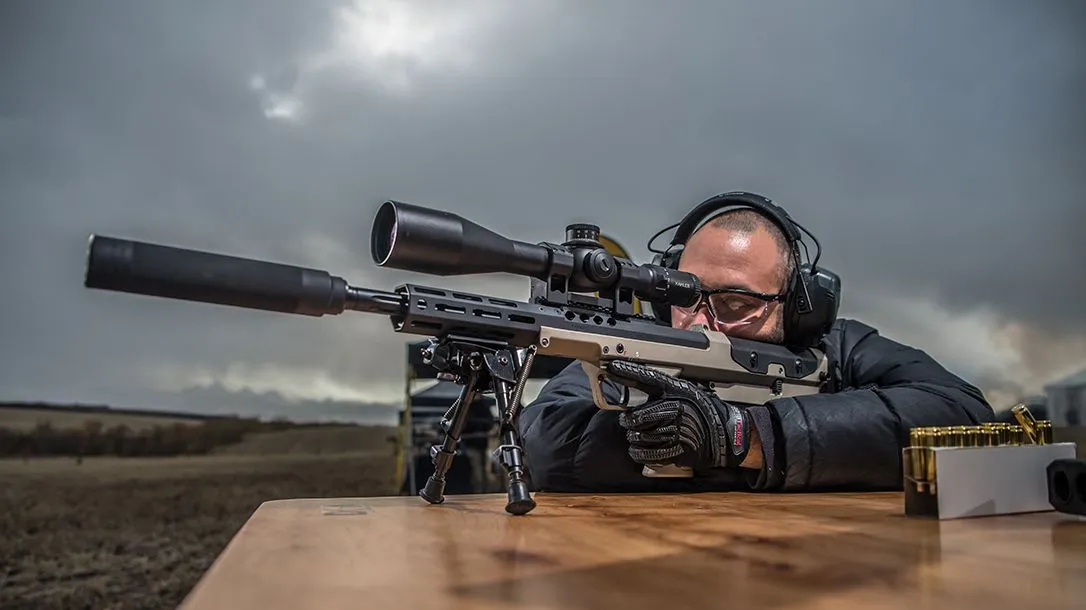
The Future of Sniper Rifles
The direction in which the improvement of sniper rifles is going is pretty clear. There is an ongoing trend for implementing technological advancements, with a focus on precision, range and adaptability. One of the most significant developments is the MK-22 Precision Sniper Rifle, set to replace all bolt-action sniper rifles for the Marines, as well as the Army’s existing M107 and the M2010 Enhanced Sniper Rifle. This new rifle represents a shift towards multi-role adaptive systems, providing soldiers with greater versatility in various combat scenarios.
In terms of technological enhancements, we might have reached the peak of what a sniper rifle can achieve in its traditional sense. However, the future may lie in further integrating advanced technologies into these weapons. That could include more sophisticated optics, improved ammunition, and perhaps even smart technology for better target acquisition and tracking.
Conclusion
From their humble beginnings as hunting rifles to the current high-tech incarnations, sniper rifles have come a long way. Step by step, improvement after improvement, they became more suitable for long-distance shooting. But the advancement of sniper rifles wouldn’t have been possible without rifle scopes. They are the only thing that made sniping as we know it today possible. We don’t know what the future holds for sniper rifles, as they have already reached something of a peak in their development. But even if they have already reached their prime, they will nonetheless remain a vital part of weapons history and modern warfare.
Check out our other “History” articles:
FAQs
What was the first sniper rifle ever used?
The term “sniper rifle” wasn’t commonly used until the 20th century, but early versions of these long-range weapons have been around for centuries. The Whitworth rifle ranks among the candidates for the title of the sniper rifle prototype.
Which sniper rifle had the most impact during World War II?
Both the M1903 Springfield and Mosin-Nagant were widely used and had significant impacts on the war.
How have technological advancements affected sniper rifles?
Technology has greatly improved the accuracy and effective range of sniper rifles. From enhanced optics to thermal imaging, tech has given these weapons an edge on the battlefield.




Leave a Reply